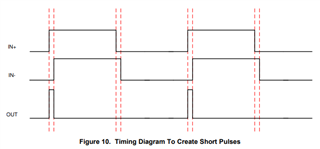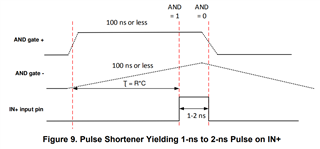Other Parts Discussed in Thread: LMG1210, LMG1020
Hi TI,
I'm considering using LMG1025 to synthesize 1ns pulses for the input of another LMG1025 (which subsequently drives a GaN FET). Can these LMG1025s be connected together simply by placing a current-limiting resistor between the first LMG1025's output and the next LMG1025's input?




